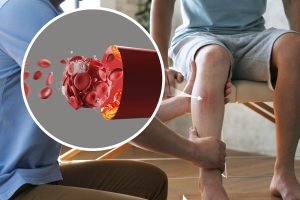
Hotline: 10654 Emergency Information Only: 01958509222
- Hotline: 10654
- Emergency: +880 1958-509 222
- info@shiphospitalbd.com
Peripheral Artery Disease is a condition in which narrowed arteries reduce blood flow to the arms or legs. PAD is also called Arteriosclerosis Obliterans (ASO). It is primarily caused by the buildup of fatty plaque in the arteries, which is called atherosclerosis.

1. Leg pain or cramping you feel when you’re active.
2. Burning or aching pain in your feet and toes when you rest.
3. Changes in skin color (like redness).
4. Cool skin on your feet.
5. Frequent skin and soft tissue infections, often in your legs or feet.
6. Swelling or lesion on your feet or toes that don’t heal.
Lifestyle change is important to prevent this disease.
Angioplasty: blocked or narrowed section of artery is widened by inflating a tiny balloon inside the vessel
Artery bypass graft: where blood vessels are taken from another part of your body and used to bypass the blockage in an artery
Depending on the condition of the disease, treatment will differ.